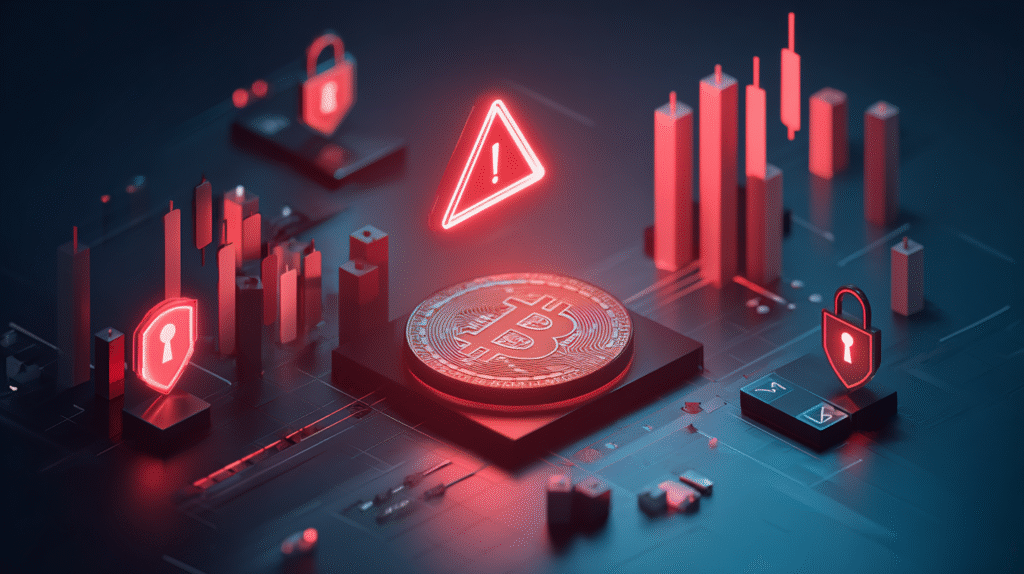Introduction to Crypto: Beginner’s Guide to Cryptocurrency & Blockchain (2025)
Welcome to your Introduction to Crypto. If you’re curious about digital currencies, blockchain, wallets, and exchanges, this beginner‑friendly guide breaks everything down into plain English. When you finish this Introduction to Crypto, you’ll understand the essentials and know exactly how to take safe first steps.

1) What Is Cryptocurrency?
Cryptocurrency is digital money secured by cryptography and powered by decentralized networks. In this Introduction to Crypto, remember three traits: it’s digital (no physical coins), borderless (global 24/7), and trust‑minimized (no single party controls the ledger). The first cryptocurrency, Bitcoin (BTC), launched in 2009; Ethereum (ETH) added programmable smart contracts.
- Decentralized: No central bank. Nodes validate transactions across a network.
- Transparent: Public ledger (blockchain) anyone can audit.
- Programmable: Smart contracts enable apps, DeFi, and NFTs.

2) Why This Introduction to Crypto Matters
This Introduction to Crypto matters because crypto is changing how we store, move, and grow value online. Understanding core ideas now helps beginners avoid scams, choose reputable exchanges, and build safer long‑term habits.
- Financial access: Anyone with a phone can hold value.
- Lower‑friction payments: Faster, cheaper global transfers.
- New opportunities: From BTC/ETH to DeFi/NFTs and tokenized assets.
- Ownership: Self‑custody wallets put you in control.
- Innovation: Programmable money enables new business models.
3) How Cryptocurrency Works
Every on‑chain transaction is broadcast, verified, and then added to the blockchain. For beginners reading this Introduction to Crypto, think of the flow as: your wallet → exchange (optional) → blockchain.
Wallets
- Hot wallets: Software like MetaMask or Trust Wallet (convenient, online).
- Cold wallets: Hardware like Ledger or Trezor (offline, safest for savings).
Exchanges
Exchanges let you buy, sell, and trade. Beginner‑friendly options include
Binance,
Bybit,
OKX,
Coinbase, and
KuCoin.

4) Blockchain Basics
Blockchain is the backbone of this Introduction to Crypto. It groups transactions into blocks, links them cryptographically, and distributes the ledger across many computers. Altering past data would require rewriting the entire chain — practically infeasible.
- Consensus: Proof of Work or Proof of Stake decide who adds the next block.
- Security: Cryptography + distribution resist tampering.
- Transparency: Anyone can verify transactions on a block explorer.
Explore more in our cluster: Blockchain Basics, Smart Contracts, Consensus Mechanisms.
5) Benefits of Crypto
- Speed: Settlements in seconds/minutes.
- Global reach: No borders or bank hours.
- Open innovation: Anyone can build on public networks.
- Self‑custody: Control assets directly with wallets.
- Diversification: A new asset class alongside stocks/bonds.

6) Risks & Challenges
Opportunities come with risk. In any Introduction to Crypto, beginners should learn these first:
- Volatility: Prices move fast; position sizing is critical.
- Security threats: Phishing, key leaks, SIM swaps.
- Regulatory uncertainty: Rules differ by country and evolve.
- Irreversible transfers: On‑chain mistakes can be permanent.
Mitigate risks with 2FA, secure seed phrases offline, and reputable exchanges.

7) Key Types of Digital Assets
- Bitcoin (BTC): Digital gold, capped supply.
- Ethereum (ETH): Smart‑contract platform for DeFi/NFTs.
- Stablecoins: USDT/USDC pegged to fiat; lower volatility.
- Altcoins: Layer‑1s, DeFi tokens, infrastructure projects.
- Meme coins: Community‑driven; highly speculative.

8) How to Get Started (Step‑by‑Step)
Use this Introduction to Crypto as a checklist for safe onboarding:
- Pick a reputable exchange:
Binance,
Bybit,
OKX,
Coinbase,
KuCoin. - Create account & KYC: Verify identity; raise limits; unlock features.
- Enable security: 2FA, anti‑phishing code, withdrawal whitelists.
- Fund your account: Bank transfer/card/P2P (fees vary by region).
- Start simple: Buy BTC/ETH or a stablecoin pair; avoid leverage.
- Learn risk basics: Position sizing, stop‑loss, and a written plan.

9) Resources & Next Steps
- Pillar: Crypto Trading for Beginners
- Exchanges Hub: Crypto Exchanges → Binance, OKX, Bybit, Coinbase
- Wallets Hub: Wallets & Security → MetaMask, Trust Wallet, Hardware Wallets, Seed Phrase
- Trading Basics: Basic Trading Knowledge
- Risk & Psychology: Risk Management & Psychology
10) FAQ

Do I need a wallet to start?
On centralized exchanges you can buy and hold without an external wallet. For long‑term storage after this Introduction to Crypto, use a hardware wallet for safety.
How much do I need to begin?
Most exchanges allow starting with $10–50. Begin small and learn execution and risk controls.
Is crypto legal in my country?
Regulations vary. Always choose reputable, compliant exchanges in your region.
What’s the safest first step?
Open a reputable exchange account, enable 2FA, and make a small purchase of BTC/ETH while practicing wallet hygiene.
